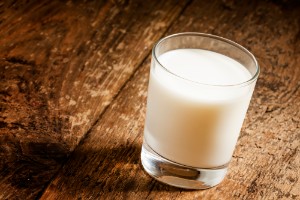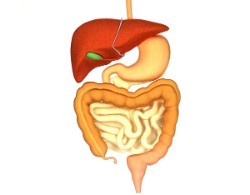Lactose-free milk: what does it mean and 4 facts about its benefits
 Lactose–free milk is regular milk that lacks the carbohydrate lactose.
Lactose–free milk is regular milk that lacks the carbohydrate lactose.
Such milk is recommended for people suffering from lactose intolerance or having allergic reactions to this carbohydrate component.
In general, lactose-free milk contains the entire set of valuable amino acids, macronutrients and vitamins inherent in regular milk, and also has similar benefits and, in some cases, harm.
Content
What kind of milk is this and to whom is it shown?
 Lactose–free milk is a special product of the technical processing of ordinary drinking milk, in which lactose is either completely removed or hydrolyzed to simple sugars.
Lactose–free milk is a special product of the technical processing of ordinary drinking milk, in which lactose is either completely removed or hydrolyzed to simple sugars.
According to the norms of industrial production, such milk can contain no more than 100 mg of lactose in 1000 ml of ready-to-consume milk.
Lactose-free and low-lactose dairy products are suitable for people suffering from Lactose intolerance . In this condition, the body unable to Synthesize the enzyme lactase, which is responsible for the breakdown and subsequent assimilation of lactose. As a result, a complex of digestive disorders develops: belching, heartburn, nausea, bloating, spastic abdominal pain, etc.
According to Brazilian scientists, 75% of the world's population has a certain degree of lactose intolerance. The deviation is acquired in nature: in the first few years of life, lactase is produced, and then its synthesis is gradually suppressed until it stops altogether.
The main difference Lactose–free milk from regular milk has a sweeter taste. The fact is that the processing breaks down lactose to simple sugars: galactose and glucose. These substances, according to scientific data , are perceived by the human brain more pronounced than complex carbohydrates, due to the peculiarities of the structure of receptors on the mucous membrane of the tongue.
The concentration of other ingredients practically does not change during processing. The only disadvantage of milk devoid of carbohydrates is the high cost due to the complex production technology.
Composition and calorie content
The content of valuable nutrients in lactose-free milk remains virtually unchanged. It is also rich in proteins, micro- and macronutrients (calcium, phosphorus, magnesium) and vitamins (B2, B12, D).
It is important to note that most types of such processed milk are artificially enriched with vitamin D, which ensures proper mineral metabolism and promotes Bone strengthening .
Below is a comparative table of the content of substances in milk of both types:
| Name of the substance | Content in regular milk (per 100 g of product) | Content in lactose-free milk (per 100 g of product) |
| Total calories | 46.0 kcal | 39.0 kcal |
| Proteins | 3.20 g. | 3.30 g. |
| Fats | 4.80 g. | 3.10 g. |
| Lactose | 4.80 g. | 0.01 g. |
| Fats | 1.50 g. | 1.50 g. |
| Calcium | 120 mg | 120 mg |
4 useful properties
Milk, devoid of carbohydrates, has almost all the beneficial properties of regular milk .
The following are additional facts about the benefits that are inherent exclusively in lactose-free milk.
1. Eliminates the symptoms of lactose intolerance
 As already mentioned, a significant part of the world's population has a lactase deficiency in the body. Such people cannot consume whole milk.
As already mentioned, a significant part of the world's population has a lactase deficiency in the body. Such people cannot consume whole milk.
Lactose-free milk allows you to get the full amount of nutrients and probiotics without harm to health and the development of adverse reactions.
When using technically processed cow's or goat's milk, the probability of developing dyspeptic disorders (nausea, vomiting, flatulence, spastic abdominal pain, diarrhea, dehydration, etc.) is minimized.
According to Korean scientists, such a milk replacement option really eliminates the clinical manifestations of lactose intolerance syndrome and is recommended as an alternative to regular milk.
2. The risk of allergic reactions is lower
 Casein and lactose are among the strongest allergens. The removal of one of these substances leads to a decrease in the frequency of allergic reactions to milk.
Casein and lactose are among the strongest allergens. The removal of one of these substances leads to a decrease in the frequency of allergic reactions to milk.
It is also important to note that with a decrease in lactose intake, the production of class E immunoglobulins decreases, which prevents the development of atopic diseases associated with the pathology of the immune response (atopic dermatitis, bronchial asthma, etc.).
The absence of lactose in the milk used also has a beneficial effect on the general state of the immune system . In the absence of constant stimulation of the immune system, allergopathologies in relation to other allergens are several times less common.
3. Digested faster
 "standard" milk contains a lot of lactose, which causes excessive activation of secretory cells of the gastrointestinal tract and the production of large volumes of digestive juices.
"standard" milk contains a lot of lactose, which causes excessive activation of secretory cells of the gastrointestinal tract and the production of large volumes of digestive juices.
As a result, the body spends a lot of effort and energy to digest the product.
In the absence of complex carbohydrates, the processes of cleavage of all substances that make up milk proceed much faster, and the bioavailability of milk is higher.
4. It has a sweet taste, so children like it more
 In the product, lactose is hydrolyzed to form simple sugars. Monosaccharides are much better perceived by receptor complexes located on the mucous membrane of the tongue.
In the product, lactose is hydrolyzed to form simple sugars. Monosaccharides are much better perceived by receptor complexes located on the mucous membrane of the tongue.
As a result, a person feels a sweeter taste than when drinking regular milk.
This feature of the body can be used to teach children to consume dairy products (especially in the presence of allergic reactions and lactose intolerance in the anamnesis).
Overview of specific manufacturing companies
The production of lactose-free milk is currently gaining momentum in the world at a record pace. The following trademarks are in high demand in Russia:
- &171;Valio&187;. This company is one of the first in the world to launch the production of lactose-free products, has its own patented technology for removing lactose from dairy raw materials. The main production facilities are located in Finland, but small enterprises are also located in Russia.
- &171;Savushkin product&187;. Is a large Belarusian company that produces an extremely diverse range of dairy products. The raw material for the manufacture of a lactose-free drink is natural cow's milk, which is supplied from protected areas of the country. The manufacturer sells its products in more than 25 countries around the world.
- &171;Latter&187;. Domestic producer of lactose-free milk. The raw material is natural high-quality milk, which is supplied from small farms located in the Moscow region.
How it is made – the nuances of production
 Lactose-free milk production is currently widespread. The product is manufactured not only in Russia, but also in many foreign countries: in the United States of America, New Zealand, Japan, Canada, Australia and Western Europe.
Lactose-free milk production is currently widespread. The product is manufactured not only in Russia, but also in many foreign countries: in the United States of America, New Zealand, Japan, Canada, Australia and Western Europe.
There are three main ways to remove lactose:
- Traditional method of treatment by microorganisms;
- The breakdown of lactose by enzymes;
- Membrane ultrafiltration.
In the first variant, a specialized lactic acid starter culture is added to the milk mixture, the microorganisms of which will break down lactose to simple sugars (glucose and galactose). The mixture is selected in a special way so that the taste and external qualities of the product remain as unchanged as possible.
The second option involves the artificial production of the lactase enzyme, which is then added to milk and provides lactose hydrolysis. Separate forms of fungi and yeast are used for the production of lactase. The addition of the synthesized enzyme ensures the destruction of up to 98% of lactose in dairy raw materials, and no more than 1.0 g of carbohydrate remains in a liter of the final product (with a similar processing option).
The best method is considered to be the type of filtration using a membrane, which was developed in 2001. The method makes it possible to obtain a drink with a lactose content of less than 0.01%. The principle of operation is extremely simple: milk is passed through a special ultrafilter, which retains practically the entire volume of lactose. Then an artificially obtained enzyme, lactase, is added, which breaks down all carbohydrate residues.
Conclusion
Thus, lactose–free milk is an extremely useful food product. After industrial processing, milk loses the complex carbohydrate lactose, which makes it available to people suffering from allergic reactions and lactose intolerance syndrome. The content of valuable nutrients remains at the same level, which makes such milk even more attractive.





